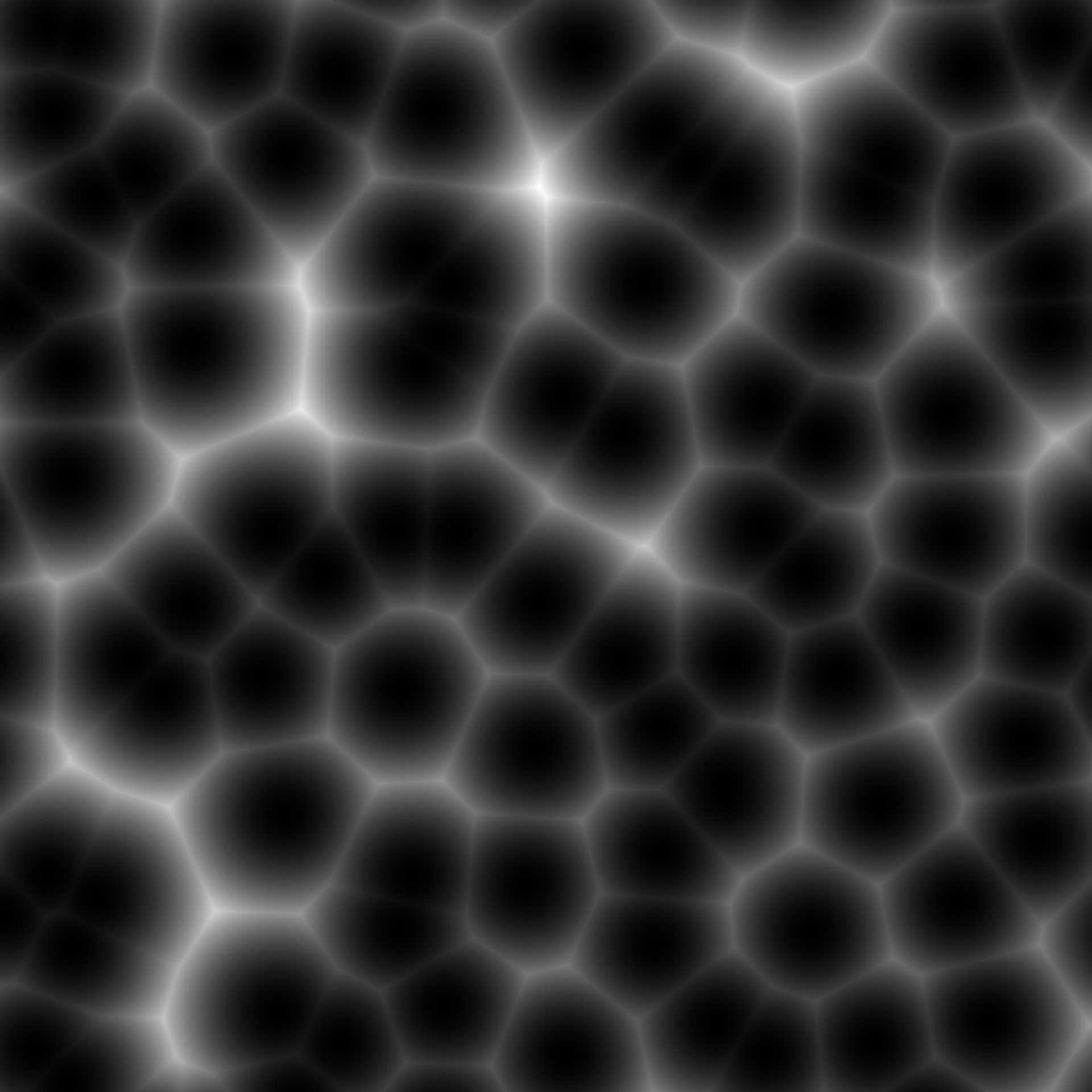Worley noise, sometimes called cell (or cellular) noise, is quite distinct due to it's kinship to voronoi tesselation. It is created by sampling random points in space and then for any point in space measure the distance to the closest point. The noise can be modified further by changing either the distance measure or by combining multiple distances. The noise algorithm was developed by Steven Worley in 1996 and has been used to simulated water and stone textures among other things.
noise_worley(
dim,
frequency = 0.01,
distance = "euclidean",
fractal = "none",
octaves = 3,
lacunarity = 2,
gain = 0.5,
value = "cell",
distance_ind = c(1, 2),
jitter = 0.45,
pertubation = "none",
pertubation_amplitude = 1
)
gen_worley(
x,
y = NULL,
z = NULL,
frequency = 1,
seed = NULL,
distance = "euclidean",
value = "cell",
distance_ind = c(1, 2),
jitter = 0.45,
...
)Arguments
- dim
The dimensions (height, width, (and depth)) of the noise to be generated. The length determines the dimensionality of the noise.
- frequency
Determines the granularity of the features in the noise.
- distance
The distance measure to use, either
'euclidean'(default),'manhattan', or'natural'(a mix of the two)- fractal
The fractal type to use. Either
'none','fbm'(default),'billow', or'rigid-multi'. It is suggested that you experiment with the different types to get a feel for how they behaves.- octaves
The number of noise layers used to create the fractal noise. Ignored if
fractal = 'none'. Defaults to3.- lacunarity
The frequency multiplier between successive noise layers when building fractal noise. Ignored if
fractal = 'none'. Defaults to2.- gain
The relative strength between successive noise layers when building fractal noise. Ignored if
fractal = 'none'. Defaults to0.5.- value
The noise value to return. Either
'value'(default) A random value associated with the closest point'distance'The distance to the closest point'distance2'The distance to the nth closest point (n given bydistance_ind[1])'distance2add'Addition of the distance to the nth and mth closest point given indistance_ind'distance2sub'Substraction of the distance to the nth and mth closest point given indistance_ind'distance2mul'Multiplication of the distance to the nth and mth closest point given indistance_ind'distance2div'Division of the distance to the nth and mth closest point given indistance_ind
- distance_ind
Reference to the nth and mth closest points that should be used when calculating
value.- jitter
The maximum distance a point can move from its start position during sampling of cell points.
- pertubation
The pertubation to use. Either
'none'(default),'normal', or'fractal'. Defines the displacement (warping) of the noise, with'normal'giving a smooth warping and'fractal'giving a more eratic warping.- pertubation_amplitude
The maximal pertubation distance from the origin. Ignored if
pertubation = 'none'. Defaults to1.- x, y, z
Coordinates to get noise value from
- seed
The seed to use for the noise. If
NULLa random seed will be used- ...
ignored
Value
For noise_worley() a matrix if length(dim) == 2 or an array if
length(dim) == 3. For gen_worley() a numeric vector matching the length of
the input.
References
Worley, Steven (1996). A cellular texture basis function. Proceedings of the 23rd annual conference on computer graphics and interactive techniques. pp. 291–294. ISBN 0-89791-746-4

